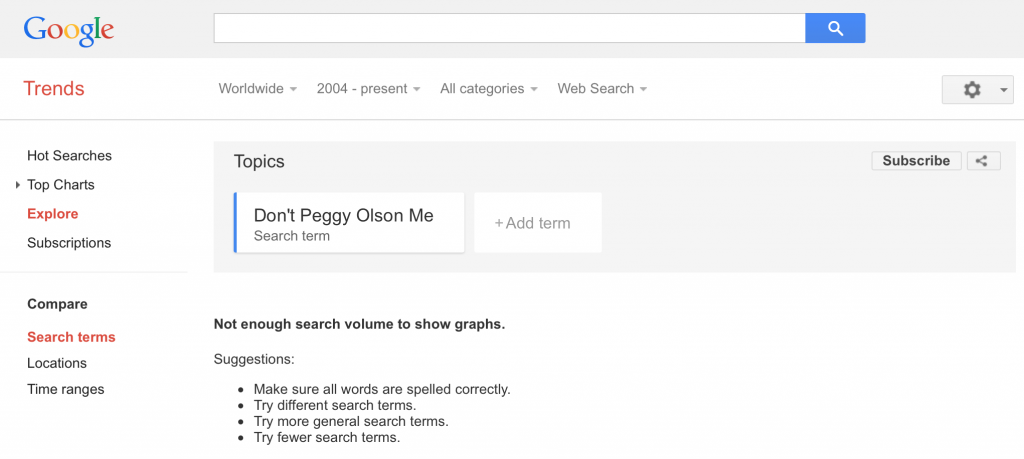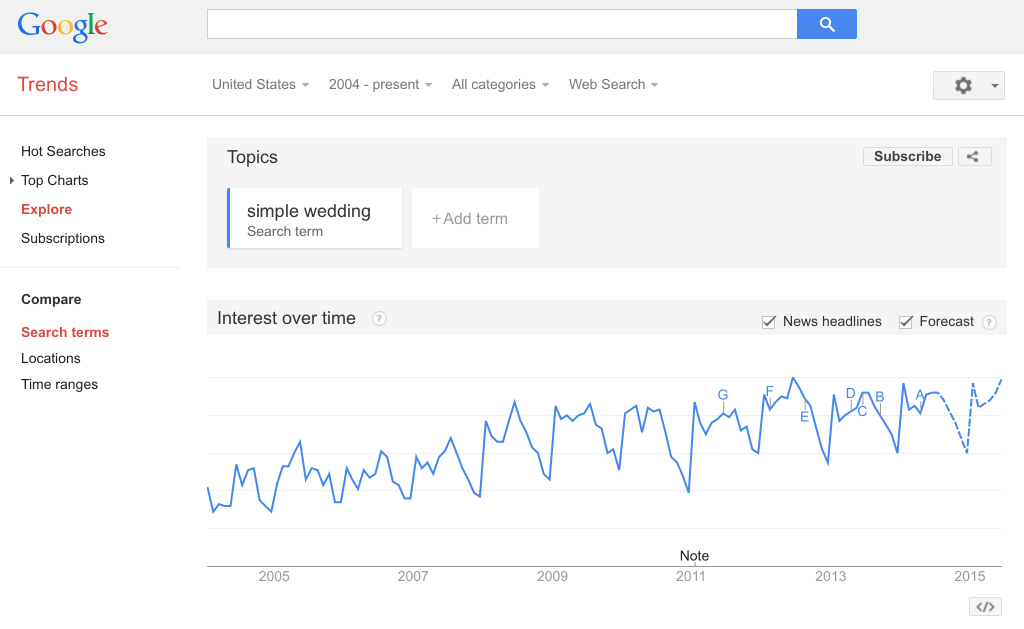[this post first appeared on Medium]
I was in Portland last week looking for artisans to interview for the Artisanal Economies Project and stumbled upon a vintage clothing store.
A clothing store is not perfectly artisanal, but I figured it qualified. It is, after all, curatorial, small batch and non industrial.
The woman within was happy to help but she told me that her store was threatened by insolvency. We talked for maybe 30 minutes and it became clear she had stalled. She could not stay in her present location, but she wasn’t sure where she and her husband should move.
“We’re from the midwest…” Marie trailed off, “If you have any suggestions, please let me know.”
Back in my hotel room, I wondered if Google Trends could help. I had the honor of talking to Hal Varian about Google Trends several months ago, and I’ve been looking for an opportunity to explore what it can do.
I searched “vintage clothing” and it was clear that this is in decline nationally. Marie is right to be concerned.

Google Trends allows us to drill down by state. Oregon shows lots of volatility and a still more marked decline.

Google Trends ranks the states. This chart shows the states that rank low. And it turns out that Oregon ranks very low indeed, 45 out of 46 states. By this reckoning, Marie lives in almost the worst state in which to have a vintage clothing store. So moving anywhere is probably a good idea.

The next chart shows the states that rank high. It suggests that California or New York might be better choices.

Google Trends let’s us drill down to the city level.

This suggests Eugene would be better than Portland. (And Boise would be very bad indeed.)
There are several issues here.
1 The chief of these is whether Google Trends is, for Marie’s purposes, measuring what we want to measure in the way we want to measure it. I will leave this issue to readers. I would just say that these data must be dramatically better than the ones that Marie and her husband now have at this disposal.
2 Should Marie and her husband trust a life decision to these data. I think the answer has to be ‘yes.’ Again, at this point they have NO alternative data with which to work. (They appear to be considering a return to the midwest simply because they come from there. From an “industry” point of view, this is anti-strategic.)
3 The last question is the most obvious intellectual one. Why should vintage clothing be doing badly in Oregon? (Marie told me that there used to be 12 stores in Portland and now there are only 4.)
I would have thought that vintage clothing would be one of the best ways of ‘keeping Portland weird.’ That is to say, I would have thought that vintage clothing would have resonate with this and other cultural things that define the locality.
4 This bring us to the prize question. By the looks of things here, a change is taking place in Portland. Consumer taste and preference has shifted. It is an anthropological truth that a shift of this order cannot be trivial. It must indicate a deeper change taking place in the culture of Portland, in the very “mentality” (as the French social scientist would call it) of the city.
Any change of this kind is interesting to an anthropologist. But when it is something taking place in a city now famous for setting the trend for some part of the rest of the country, then, yowser, this is very interesting.
Best of all, this change is, at least for me, counter intuitive. I would never have guessed it. I have no ready explanation. I am mystified. And this means that the change in question is, at least for me, disruptive.
Now to figure out what it is…
5 Google trends has several clear and verified uses. Marie’s example that it might also serve for the purpose of life navigation. Career counsellors and life coaches, take note.
(post script: “Marie” is a made-up name.)










